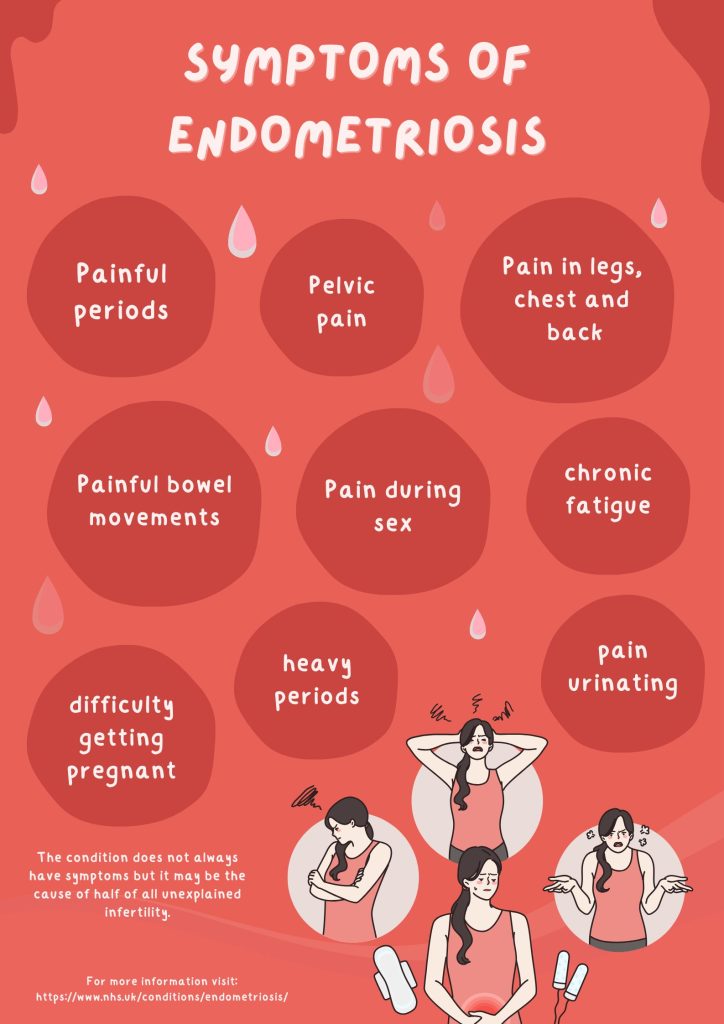Getting a diagnosis for endometriosis now takes almost a year longer than before the pandemic, according to new research by the charity Endometriosis UK.
A new study published this month shows that diagnosis times have significantly worsened over the last three years with an average wait time of eight years and ten months.
Endometriosis is a condition affecting one in ten women (of reproductive age) where the uterus lining (known as endometrial-tissue) grows in other areas of the body, which causes a chronic, inflammatory reaction.

The lengthy wait for a diagnosis means a delay in accessing treatment, during which the condition may progress, leading to worsening physical symptoms and a risk of permanent organ damage.
Emma Cox, CEO of Endometriosis UK, said: “Taking almost nine years to get a diagnosis of endometriosis is unacceptable.
“The theme of Endometriosis Action Month 2024 is ‘could it be endometriosis?’.
“Raising awareness of the symptoms of endometriosis with the general public, along with healthcare practitioners and those in charge of health services, will be a step towards shortening very lengthy waits.”
Annie Trotter, 26, was diagnosed with endometriosis after dealing with painful symptoms for years.
Because the endometrial tissue is on her bowel, bladder and diaphragm she was treated for IBS-related symptoms for most of her twenties due to being repeatedly misdiagnosed by doctors.
“I went to the doctor several times with pelvic pain and stomach-related problems.
“The pain was awful if I went to the toilet…worse than period pains.
“Even if you don’t feel physical pain at that moment in time, your body’s fighting tiredness and fatigue…I don’t think people understand.”
Surgery is currently the only way to confirm a diagnosis of endometriosis. The surgeon will perform a laparoscopy (a type of keyhole surgery) to examine the reproductive organs, intestines and other surfaces for any endometriosis.
Almost two years on from her diagnosis, Annie is awaiting a second surgery to help treat her condition.
The Endometriosis UK report, released during Endometriosis Action month (March) surveyed over 4300 people with the condition. It shows:
Almost half of all respondents (47%) had visited their GP 10 or more times with symptoms prior to receiving a diagnosis, and 70% had visited 5 times or more.
A survey respondent (who’s remained anonymous) said: “When I first went to the GP as a teenager, I was told I was being dramatic and would get used to the period pain I was having.”
Only 10% of respondents reported that GPs mentioned they suspected endometriosis at either their first or second appointment where symptoms were discussed.
52% had visited A&E at least once, and fewer than a fifth of those (17%) were referred to gynaecology at their first visit.
78% of people who later went on to receive a diagnosis of endometriosis had experienced one or more doctor telling them they were making a ‘fuss about nothing’ or similar comments and many had the severity of their symptoms questioned by healthcare practitioners.
Another anonymous respondent said: “I was constantly dismissed, ignored and belittled by medical professionals telling me that my symptoms were simply due to stress and tiredness. I persevered for over 10 years desperate for help.”
Endometriosis UK says that, despite impacting 1.5 million people across the UK, governments are failing to recognise the impact of endometriosis or allocate sufficient resources to diagnosing it, with many healthcare practitioners lacking understanding of the disease.
The report includes several suggestions on how to improve diagnosis time, including:
Calling on the four governments of the UK to commit to a target of an average diagnosis time for endometriosis of one year or less by 2030. ·
Urging NHS commissioners and providers to urgently drive down gynaecology waiting times.
Making sure all healthcare practitioners receive training on menstrual health and endometriosis awareness.
Asking governments across the UK to invest in public health education campaigns helping people to recognise the most common endometriosis symptoms.
More investment into research to find the cause of endometriosis, improve treatments and find better ways to diagnose the disease.
For the rest of Endometriosis Action month, Endometriosis UK are focussing on raising vital awareness of the condition.
The foundation said that Improving general understanding of the condition will ensure those experiencing symptoms, their friends and family and healthcare professionals know to ask ‘could it be endometriosis?’ leading to quicker diagnosis and access to care.
Picture credit: Polina Zimmerman





